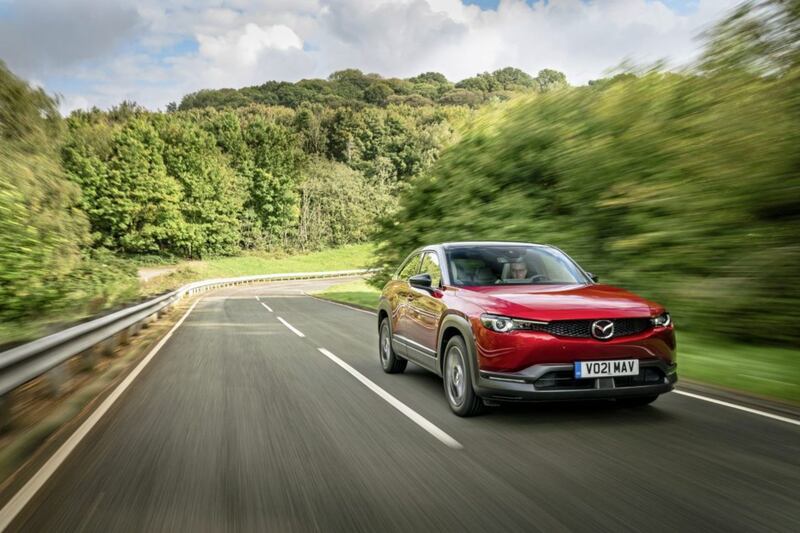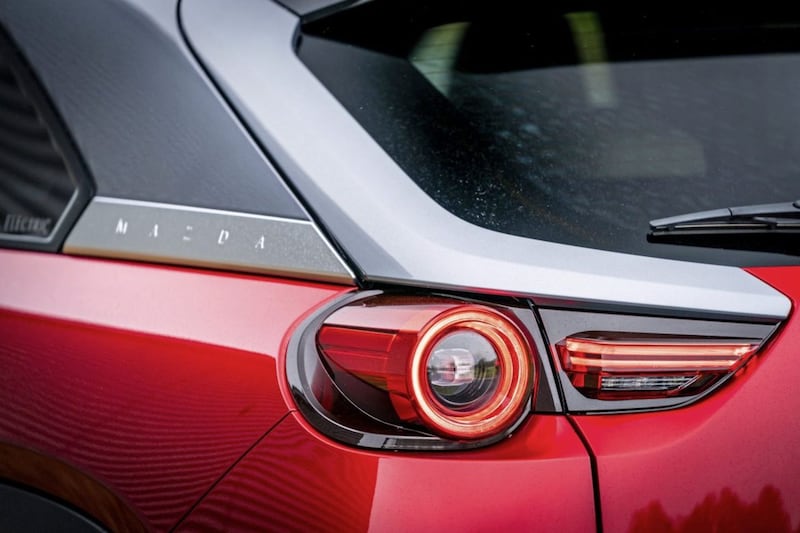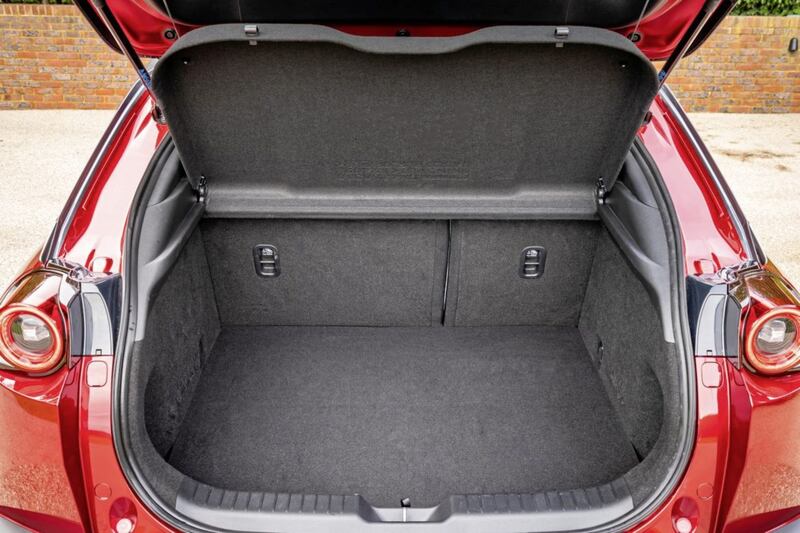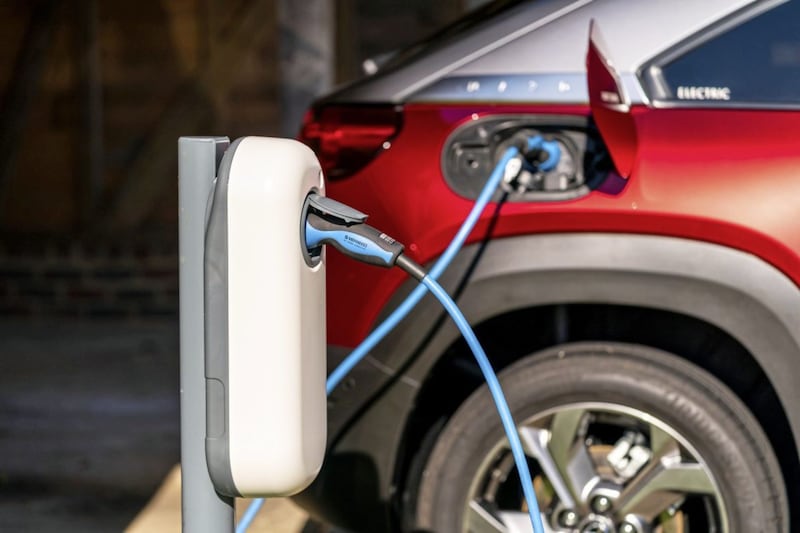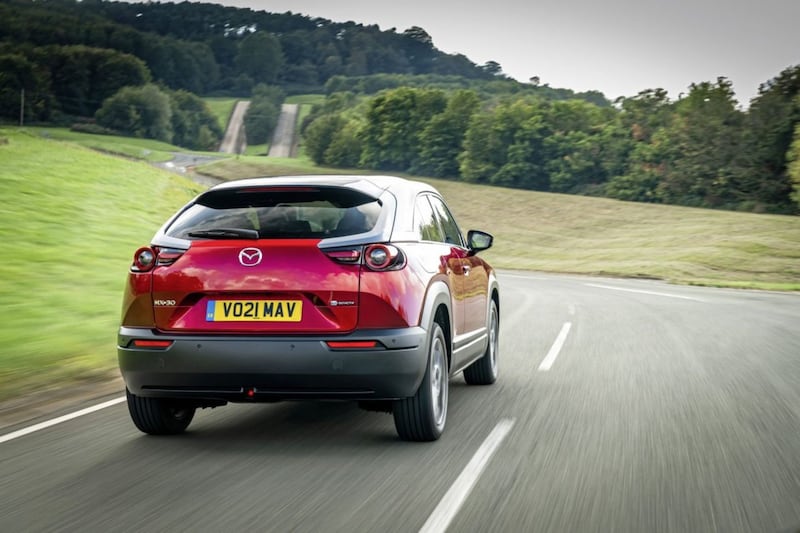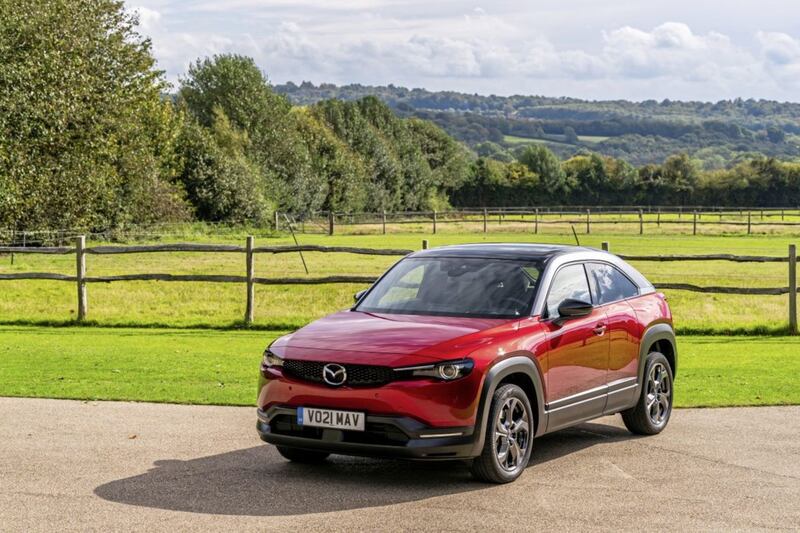REGULAR readers will know that here at Drive we yield to no-one in our admiration of all things Mazda, writes William Scholes.
What's not to like? Measured against their competitors, Mazda's cars are unerringly great looking and among the very best to drive. They're well built and make you feel good.
Mazda also has an appealingly contrarian spirit. It does things its own way, rather than following the herd. This may point to a company that still has engineers rather than marketing people calling the shots, or it may because Mazda is a relatively small fish in a global automotive industry dominated by behemoths like the Volkswagen Group, Toyota and now Stellantis, the new home for everything from Peugeot and Citroen to Fiat and Jeep.
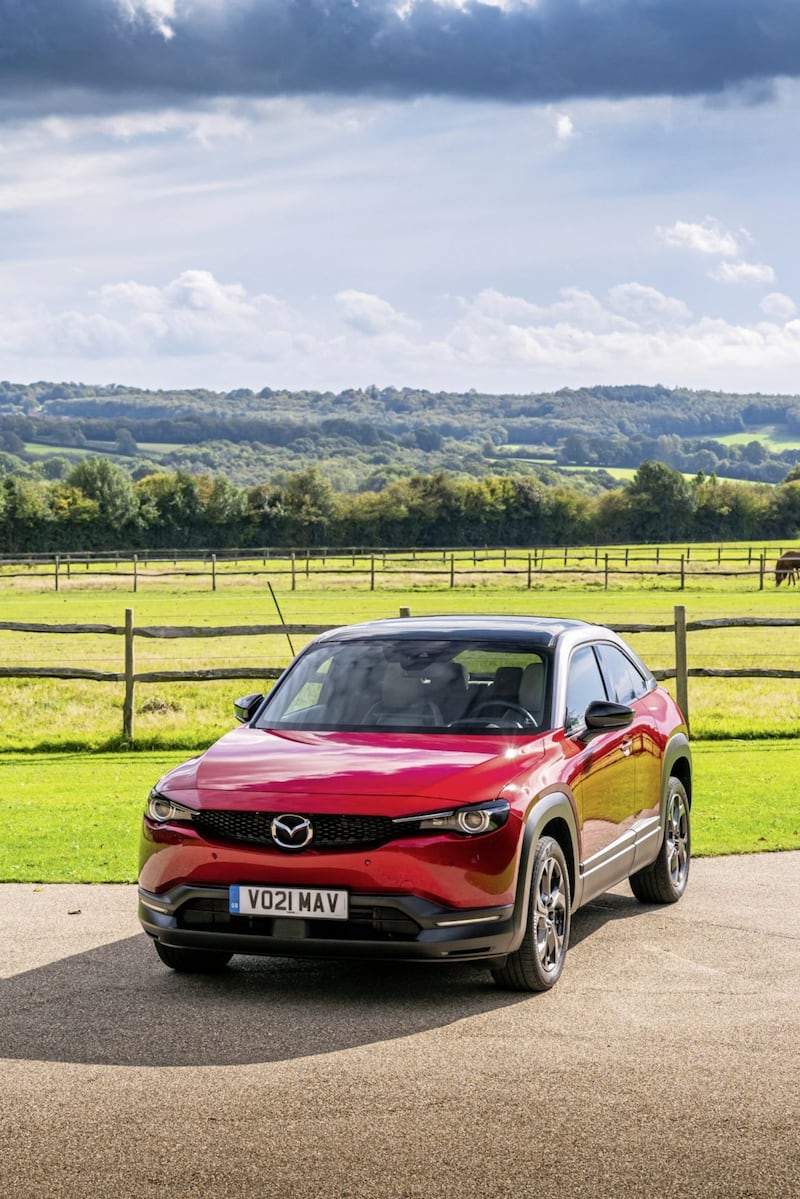
Whatever it is, this commitment to doing things its own way explains why, when every other motor maker was busy 'downsizing' their engines and adding turbochargers, the folk at Mazda did the opposite, and fitted its cars with larger capacity engines untroubled by a turbo. It reasoned that 'right-sizing' was a more efficient way of doing things.
Another Mazda innovation is the bafflingly complex Skyactiv-X engine. This is a 'spark controlled compression ignition' petrol engine whose party piece is essentially being able to switch between a diesel-like compression ignition and petrol spark ignition to deliver relatively more torque as well as more efficiency.
Over the years, other car-makers have tried to make this holy grail tech work, but Mazda is the first to make it commercially available. Many will remember its perseverance with rotary engines, too.
It has also announced it has a new six-cylinder petrol engine in the works - at exactly the time when other manufacturers are doing their utmost to get out of internal combustion engines and switch to electric.
That new Mazda engine will undoubtedly be a lovely thing, smooth and sweet-revving, but there is a real question over the place of such engines in a world that is wakening up to man-made climate change.
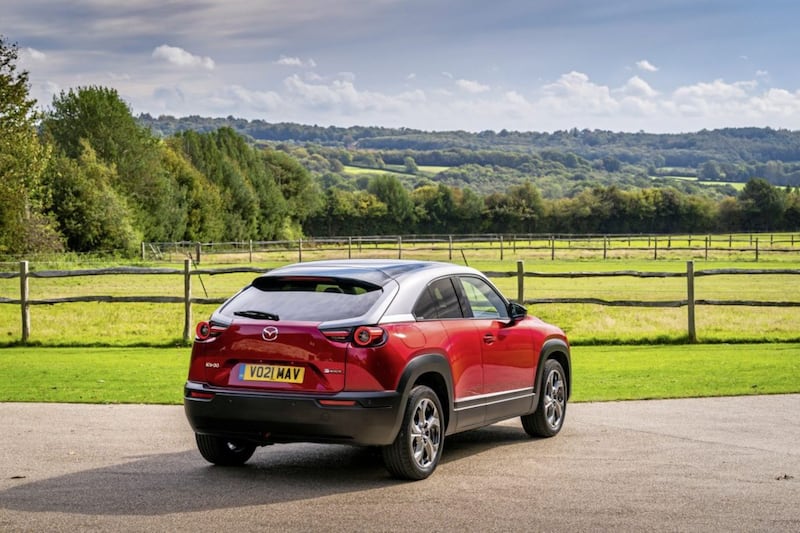
Mazda has made persuasive arguments about the 'well to wheel' efficiency of its engines being superior to electric cars when the resources needed to build batteries and generate electricity are taken into account.
But that is all rather academic now, given that markets like the UK are phasing out petrol and diesel cars by 2030 and hybrids by 2035.
In other words, even Mazda is going to have to follow the new convention and go electric sooner or later.
Which brings us to the car on this page - Mazda's first foray into production electric vehicles, or EVs, dubbed the MX-30.
There are several features about the car which are very, well, Mazda-y. The styling is the first to draw your attention. There are several Mazda tell-tales - the treatment of the lights, front and read, and the grille, for example - but this is not a conventionally stylish car in Mazda's contemporary mien, particularly when compared to something like the gorgeous Mazda 3 or shrink-wrapped MX-5.
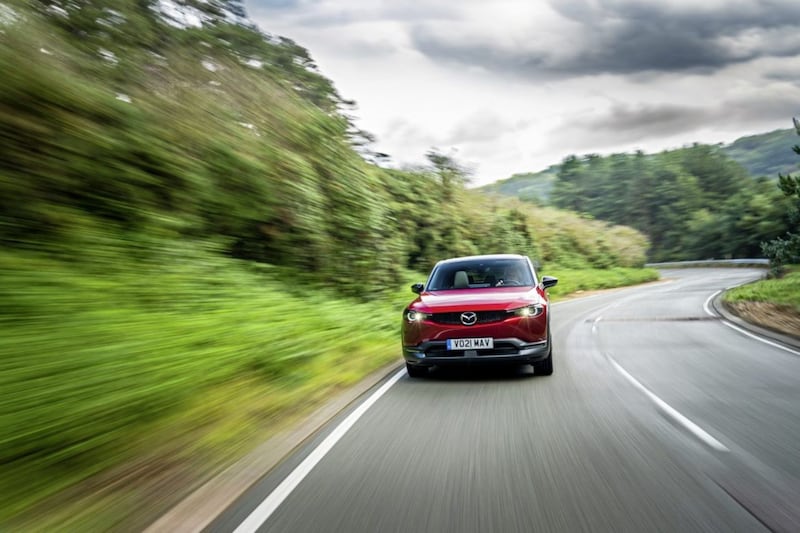
However, it does have The Doors. The MX-30 is a small family car - some will call it an SUV because of its relatively high ride height - and size-wise is in the same territory as the Mazda 3 and CX-30 (with which it shares a basic platform) and cars like the Ford Focus.
None of those have the MX-30's rear-hinged doors, though. The BMW i3 has the same set-up but it's really a throwback to an earlier Mazda, the rotary-engine RX-8 coupe.
It's an extrovert arrangement which in day-to-day use is a bit of a palaver. The front door has to be open before the back can be used, making quick kerbside drop-offs and collections a thing of the past. First world problems, and all that... But it is a talking point.
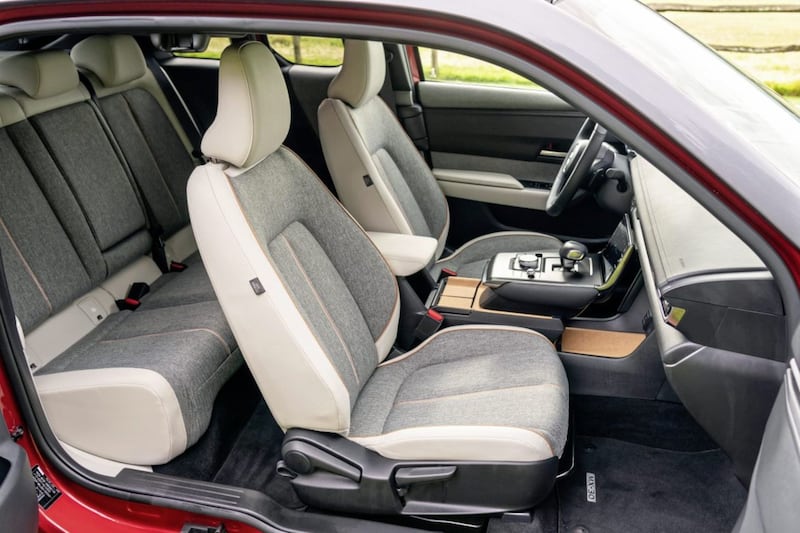
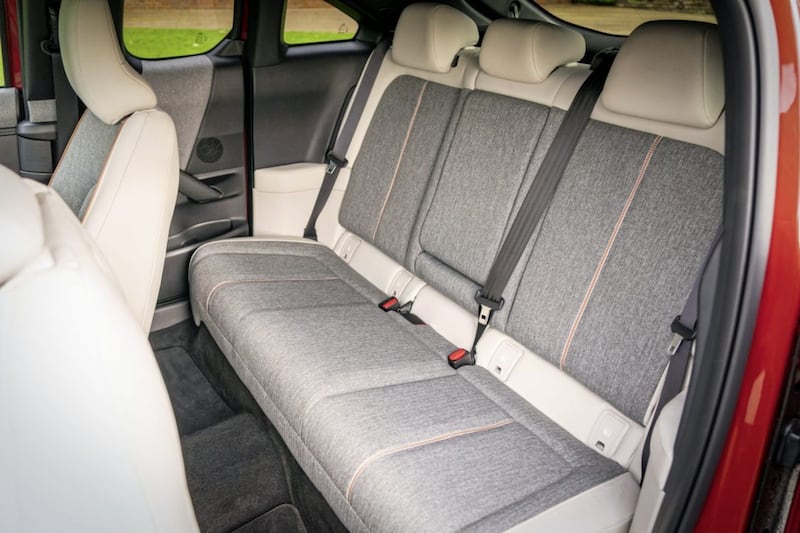
Doors aside, Mazda's contrariness is most clearly evidenced by the decisions it has made around the size of the MX-30's battery, and thus its range on a full charge.
Most EV makers are racing to extend range - understandably so, perhaps, given 'range anxiety' is a real fear among those contemplating leaving behind internal combustion engines and the reassuring safety net of petrol stations.
It is worth noting that while charging networks are constantly expanding in Britain, in Northern Ireland it often feels like things are going backwards, with unreliable equipment, slow chargers and a dearth of new sites. Few experiences are more dispiriting than queuing for the 'rapid charger' at Sprucefield...
That's worth bearing in mind where the MX-30 is concerned, as Mazda has given it a relatively small 35.5kWh battery. According to official figures, that means a range of up to 124 miles, though during my time with the car I couldn't get more than 110 miles.
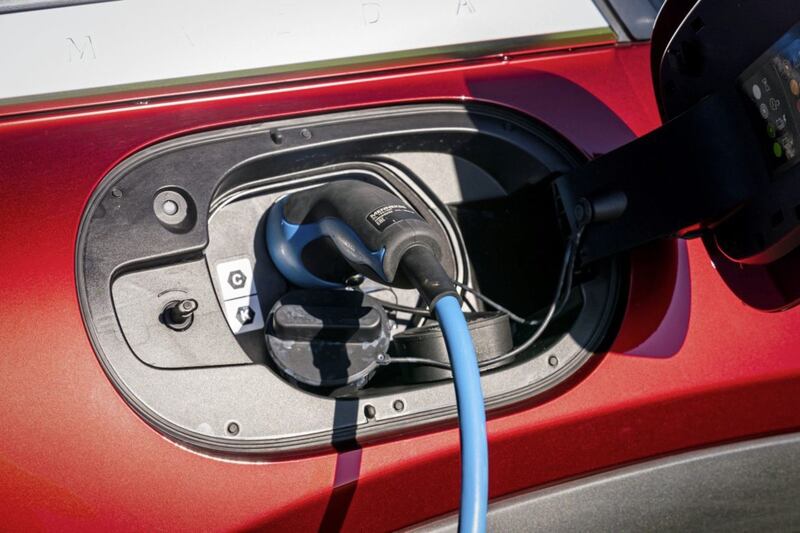
For reference, Kia will sell you an e-Niro with a 64kWh battery and a quoted range of 282 miles (or around 260 miles in the 'real world', in my experience).
Mazda's thinking is that most people don't need more than 100-ish miles on a full charge, and that smaller batteries more quickly off-set the environmental penalties associated with the manufacturing of the batteries compared to a modern, efficient petrol engine.
Indeed, Mazda is resolute in saying that it won't fit a larger battery to the MX-30. Instead, it will gain longer legs next year when a range extender version, using a small rotary engine to recharge the battery, lands. It is difficult to know how this will be received - BMW offered a range extender for the i3, but it was discontinued due to low take-up.
Whether 100 miles of range is enough for you will self-evidently depend on your own usage requirements. Nor is Mazda alone in taking a small battery/lower range approach - the Honda e and Mini Electric are in the same territory.
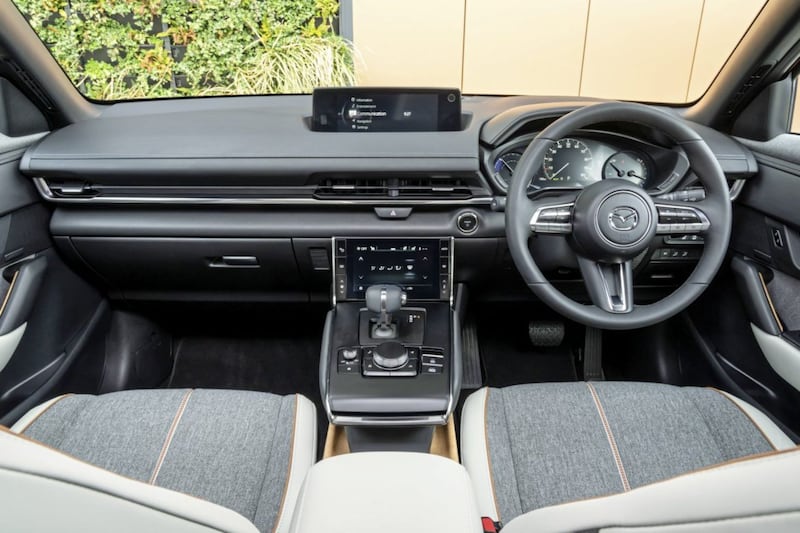
What of the rest of the package? I enjoyed the interior. Trimmed in tasteful grey cloth and with cubbies and storage compartments lined in cork - in homage to Mazda's origins, a century ago, as a cork producer - it has a straightforward analogue feel.
Some EVs are awash with digital screens and confusing graphics, and seem to take pride in confounding the driver about where to find the controls.
Not so the MX-30. Sure, there are a couple of digital screens, but there is also an idiot-proof fuel gauge-style range meter, a gear selector rather than a set of buttons or twist controls, and plenty of proper buttons to press, so you don't have to stab at a touchscreen.
The back seat is better suited to children than adults, though younger children won't appreciate the high rear window line. The 12-year-olds I shuttled around in it reckoned it was "cool", though...
Being electric, you don't get the joy of operating a Mazda manual gearbox or experiencing the cohesiveness of the clutch, brake and throttle action as you would on a petrol or diesel Mazda.
The MX-30 does, however, have one of the best implemented ways of varying the level of brake regeneration, by using the steering wheel paddles. Flicking between 'one pedal' operation, where the car slows quickly when you lift off the accelerator, and coasting, where the car feels like it is freewheeling along, is intuitive.
It means you can quickly adapt between the differing demands of, say, stop-start city driving and motorway cruising.
The 'MX' prefix suggests that Mazda sees its little EV in the same bracket as its iconic MX-5 sports car.
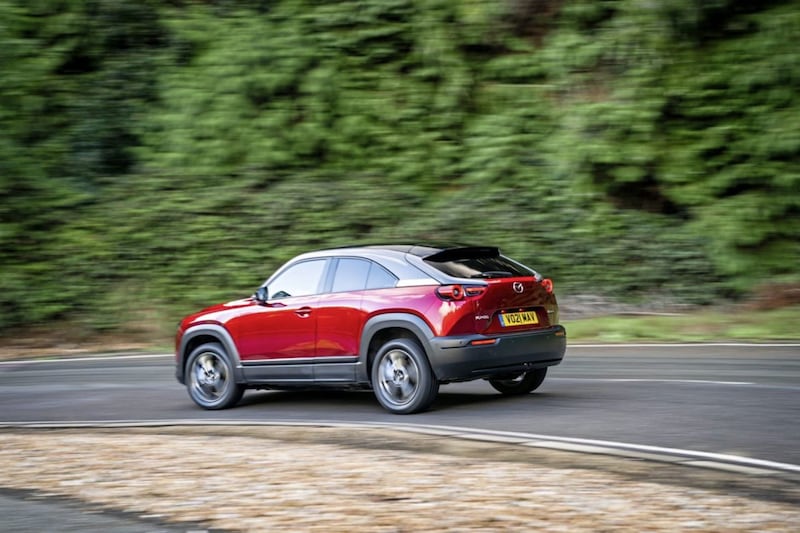
That, to be honest, is a bit of a stretch. The aforementioned lack of gearbox, clutch pedal and so on already distances the MX-30 driving experience from that of the MX-5 roadster; add the MX-30's greater height and weight into the equation and that gap feels even bigger.
However, the MX-30 is certainly a little more tactile to drive than most EVs, which tend to be rather numb and sterile devices.
Acceleration is EV-snappy from a standstill up to around 40mph; cornering is flat and composed, while the MX-30 is also super-hushed on the move.
The motor is rated at 143bhp and with 200lb ft or torque; the 0-62mph is a modest 9.7 seconds (though the car feels quicker once on the move) and the top speed is pegged at 87mph.
Four trim levels are offered; all are well equipped and are eligible for the government's £2,500 plug-in car grant. That means prices range from £26,045 for an SE-L to £30,345 for the full-house GT Sport Tech.
Those prices are competitive for the level of equipment, driving sheen and flashes of Mazda-quirkiness offered by the MX-30; but whether the car travels far enough is something only prospective buyers will be able to answer. As EVs go, the Mazda MX-30 is a fine effort; but for me, it doesn't go far enough.
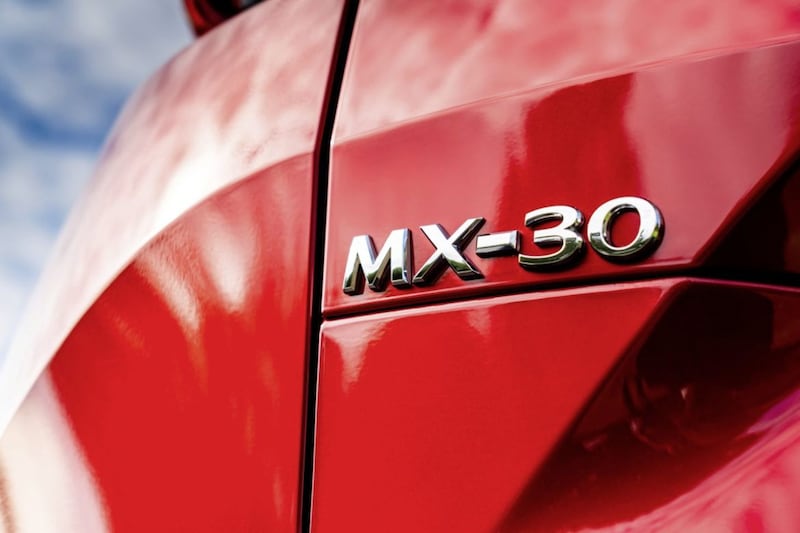
AT A GLANCE
Mazda MX-30 Sport Lux
Price: £30,545 (£28,045 after government's plug-in car grant applied). As tested: £28,595, with metallic paint £550
Drivetrain: 35.5kWh lithium-ion battery, electric motor with 143bhp and 200lb ft torque, single-speed transmission, front-wheel-drive
Performance: Top speed 87mph, 0-62mph in 9.7 seconds
Range: 124 miles (WLTP); 110 miles (real world/test - see text)
Vehicle excise duty: £0
Benefit in kind: 1 per cent
Euro NCap safety rating: Five stars (2020 test)
